Back in the mists of time – 1994 – a very unusual cartoon debuted on Disney Afternoon: Gargoyles, an astonishingly complex story about long-lived creatures who turned to stone during the day but came awake at night…and found themselves transported to modern day New York City. Filled with adventure, intrigue, romance and fantasy, the series lasted for three seasons. And there were comics. A regular series from Marvel and some shorter comics for Disney Adventures magazine, which I edited. With its rich world building and complex characters, I knew from the start that this would be a show that fans cherished, and it indeed became a cult classic.
Today Gargoyles is having a rebirth. While there have been other comics, (I even wrote one) and stops and starts along the way, the comics series has been brought back at Dynamite with a very successful ongoing and spin-offs that continues the saga that started all those years ago.
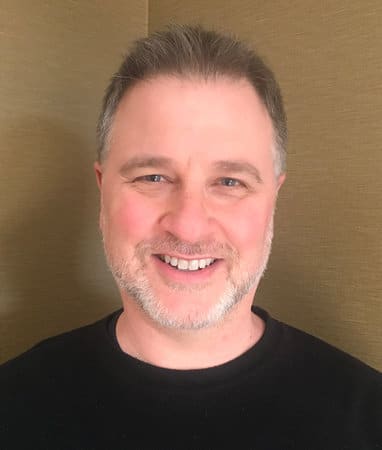
Weisman hasn’t been idle for 30 years – he’s also worked on the Young Justice cartoon, executive produced the first season of Star Wars Rebels, and is currently writing an upcoming Spectacular Spider-Man series for Marvel, among many other projects.
But Gargoyles holds a special place in his heart and it was great talking to him about the series and Gargoyles Quest.
This conversation has been edited for length and clarity.
MacDonald: So Gargoyles Quest – you’ve been writing the comics for Dynamite. You’ve been writing the comics ever since [the show] went off the air, continuing the story. What does Gargoyles Quest add to the saga of the Gargoyles?
Weisman: Well, it’s a big story, it’s an event. Demona has a game plan. And she’s got allies. She’s planning to steal the three keys to power, the three new keys to power – because we dealt with the original three keys in the old TV series. The idea is that when those three keys were destroyed in three different ways, nature and even nature magic abhors a vacuum and so all that power flowed into three new totems. Not necessarily new totems, but three other totems. She has been able, with the last remaining spell from the Grimorum Arcanorum, to identify these three totems. Once she learns what they are and learns the nature of them, she comes up with a plan first to take these items, and then to use them against the human race. Because that is sort of is thing.
MacDonald: She’s on a quest for three items, which is a classic theme. Obviously, if you’re a fan of Gargoyles, what makes this so multi-level, is that there’s this incredible world that exists for these characters. It’s so detailed. I worked on Gargoyles almost 30 years ago when I was doing the comics for Disney Adventures. I did all the Disney Afternoon series, and when the Gargoyles bible came in, I was like, “Holy cow, we’ve got a lot to work with here!” The show got canceled, all that happened, but you have never left, the Gargoyles flame has always been burning in your castle. So I guess my question for you now is how much of the stories that you’re telling right now did you have in the back of your mind all along? When did these ideas begin brewing?
Weisman: I don’t want to pretend like oh, I had these scripts in my pocket and I just pulled them out. That’s not right. But in terms of the ideas behind them, I’ve had, not all of them, but most of them for, yeah, like, 29 – well, not 29 because that’s when we just started – but 20-plus years. I’ve been keeping [composition] books, you know, the black and white [ones]. I have comp books like this filled with Gargoyles ideas. I just never stopped, something would occur to me where I’d be reading something, for Young Justice or or just on my own, I’d go “Oh, that’d be good for Gargoyles.” And I would put it down in the comp book.
The bad news for me is that those ideas are not organized in any way, shape, or form. So I’m constantly going, “Okay, I know I thought of something here. Where do I find that book?” And some of it, I’ve got a timeline, thank God, a Word file, because I can’t imagine trying to do the timeline by hand. But I’ve got just a ton of material to draw from. And the great thing about Gargoyles from day one is that we never ran out of ideas. The problem, if you want to call it a problem, but the problem even back in the day on the show wasn’t “oh my god, how are we going to do 65 episodes?” it was, which stories do we want to pick? And so at any given moment, we were picking the best stories that we had in our arsenal, but not the only ones. And that’s still the case.
On one level, I, in essence, have got hundreds of potential story ideas to draw from. And so at any given moment, you’re combining two things. One, you’re combining what are Dynamite’s and Disney’s needs, because they weigh in, believe me, in terms of what they’re looking to publish. Given those needs, I’m like, okay, what’s the best story in my arsenal? There are certain things where I’m like, well, but this is set 10 years later, I can’t use this one, or this is a great story, but it’s a flashback. Do you want to do a flashback? And with Gargoyles The Dark Ages, [A flashback to the Gargoyles past in Scotland] they were like, “Yeah, let’s do it!” But it’s got to fit the needs of the project.
In any scenario that Dynamite can come up with, I’ve got lots of options about what I could do next. And with Nate Cosby, my editor, we just sort of talk it out a bit. Vis a vis the readers, we’re about two steps ahead. So that allows me time to lay the groundwork for things that are coming down the road. And right now, the book, I’m told, is selling really well, [both] the main Gargoyles title and Dark Ages. And we have high hopes for Quest. But if that changes – and I don’t ever want to stop – but if it stops, someday, then we’ll have told the best stories we had to tell for that given period of time. And the same was true back when we did the Slave Labor comics. And the same was true back when we did the television series. At any given moment, I’m telling the best stories I have in my arsenal for the business scenario that we’re in.
For SLG, it was telling a Gargoyles story, and they wanted a spin off and we chose bad guys. For Dynamite, we’re telling Gargoyles, I wanted a spin off and we chose Dark Ages. And now as those two series come to a conclusion of their specific arcs, we’re taking a bit of a breather to do this event with Quest that will change a lot of things in the “modern Gargoyle universe” which is, of course, 1997.
MacDonald: Well, that’s the best year actually. 1997 is the best year ever in human history. Things that have been downhill since then, as far as I’m concerned, aside from the internet, and maybe not that. [laughs] With Quest you’re putting Demona in the center, and she’s a fan favorite character, who was just reintroduced in this [run]. She was kept off screen for a while, and now she’s back. So, I mean, that’s got to be pretty exciting.
Weisman: Yeah and she’s back with a vengeance.
MacDonald: Could she come back any other way? [Laughter].
Weisman: Just for the sake of checking for my own benefit, I just pulled up the Gargoyle timeline, it’s a 399 page Word document. God. So I’ve got stuff. Some of the stuff on the timeline is obviously things that were episodes of the show or issues of one or the other comic series. But some of it is events that I know need to happen, so I’ve already put them in the timeline. Other things I add, as I do each issue, because, again, it’s not like I literally had scripts sitting there. I had ideas, not scripts. And so as the details come out, I add those to the timeline. It’s constantly evolving and growing.
MacDonald: That’s what I wanted to get to. And just [to be clear] you’re like Rose in Titanic. It’s not like you’ve never had anything else in your life! After the original Gargoyles was canceled, you went out and did all sorts of cool things. So it’s not like you’ve just been sitting in your room writing in your notebooks about Gargoyles for 25 years. [Laughs]
Weisman: I’ve been busy.
MacDonald: Yes, you’ve been very busy. I guess the question is to me, do you still keep finding out things about these characters and about this world and about their history?
Weisman: Oh, definitely. I make discoveries all the time. Certain things surprise me. I mean, that was true about Gargoyles from almost literally day one. A perfect example. This is a 28 year old spoiler, but the fact that Owen is Puck. So we were working on one episode called “The Mirror.” And suddenly we knew there was some secret about Owen, but we hadn’t quite figured out what that secret was. We were also introducing this character Puck, and suddenly it hit me that ….Owen was Puck! So I called up Brynne Chandler Reeves and Lydia Marano, who were working on “The Mirror” and said, “Listen, it just hit me. Owen is Puck!” And they said ”We know!” One thing that’s always been special about Gargoyles is that the characters tell us where they want to go next. I know how cliche this sounds, but it feels like there’s a Gargoyles universe out there that that I and others who worked on the show are tapping into, that I’m telling stories that actually happened. Because things seem to always come together and fit.
We’re constantly – and by we, I mean, me and Nate and Drew [Moss] on Dark Ages, and George [Kambadais] on the main series, and now Pasquale [Qualano] on Quest, we’re adding new characters, we are constantly changing the situation. The one thing that we always tried to do with Gargoyles, and I continue to try to do, is that there’s no status quo for this series – the lives of our characters are constantly in flux. We think they live in the castle. No, we’re moving to the clock tower. No, we’re blowing up the clock tower. Now they’re back in the castle. There’s no guarantees, who lives, who dies, where they are, what the relationships are, everything is organic, and in flux, although I’m not going to do anything like pull someone way out of character, or even a little out of character. I do have the advantage for most of the characters that our voice cast was so strong for the original show. When I’m writing Goliath or Elisa or Brooklyn or any of them Demona, Lex, Broadway, you name it, Hudson, I hear their voices in my head. I know what they sound like. And even with new characters, I sort of mentally cast them in my head and go from there. The idea being that these characters have strong voices, strong points of view. They’re all unique characters to me, and they tell me what they want to do next. I try to keep my authorial meddling out of it. [Laughter]
MacDonald: That’s obviously the best way, the characters speaking through you. I want to talk a little bit about people who say the Gargoyles show was ahead of its time. It was in some ways, but it really also was of that time. We did see the beginnings of peak TV. We did see the beginnings of shows that had these long involved storylines, continuing storylines. All that existed in the 90s. And I think Gargoyles was something very bold for what Disney was doing. Certainly on the Disney Afternoon, it was a huge risk. Can you just talk a little bit about that perception? Am I wrong?
Weisman: Modern television for me, starts with Hill Street Blues, which was an 80s show, not a 90s show.
MacDonald: You’ll get no argument here on that.
Weisman: What Steven Bochco did with that series, and everyone else who followed – the list of people who worked on Hill Street is like a who’s who of writers and showrunners. And then you can go forward from there to the people they worked with on shows afterwards, and everything comes out of Hill Street. And certainly what comes out of Hill Street is this idea of two things. One, that not everything can be wrapped up neatly in a half hour or an hour. Two, the idea that status quo television can be incredibly dull. Look, we all love procedurals, we all love to say, I just solved the murder. But isn’t it better if we solve the murder, and at the same time, we see some growth out of the characters who are regulars in our show? And all that, from my point of view, you look at soap operas, because that’s really where that comes from. But Hill Street took that and did it with meaning and intention and thought and power and dealt with real world issues. And I’m not saying soap operas never – I watched All My Children for 30 years before it finally went off the air. But Hill Street Blues was a major inspiration, very much so.
And no, I don’t think we were the first or the only. But I do think in terms of what was being done in afternoon cartoons, let alone Saturday morning cartoons, which were geared even younger than afternoon shows. I think there were a lot of things we did that were particularly unique. There are a bunch of things I could name. I think that we were not ahead of our time in terms of diversity, but we were ahead of the curve in terms of what television was depicting for diversity. I don’t even take any pride in that. Because it’s like, this should have already been happening. But at least I take some comfort, again not pride, but comfort in the fact that I didn’t continue the incredibly dull tradition of let’s just do a show about white males. Honestly, it was selfish. I was personally bored with that. I lived in New York for years. Let’s show the New York that I remember, not the New York that somehow only has white men.
MacDonald: That New York doesn’t exist unless you’re at like, some tech bro hang out.
Weisman: So that was part of it. But another aspect I think was our villains. One of the things that I was in luck with, my background, like yours, is in comic books. I worked as an editor at DC Comics for years. And then as a freelance writer doing Captain Atom and other things for them. One thing that I was really bored with were petty villains, like the villain whose minion comes in and says the hero defeated me and so the villain kills the minion. “You failed me!” And I’m like, wait, dude, you’ve never succeeded in defeating the hero! One thing that I am really proud of is, in Demona and Xanatos, we created, certainly for cartoons, truly unique villains, something different that you hadn’t seen in cartoons before. Demona, probably at least subconsciously, owes a little in my head to Magneto. I wasn’t conscious of it at the time, but people have brought that up and I can see that and certainly, I was a comic book geek. I knew Magneto, so I’m sure that was in the soup, but still from a cartoon standpoint, her tragedy – which is largely self created, but not entirely – that was something that you had not seen.
Also Xanatos’s complete disinterest in being a villain. His interest was in meeting his own goals, and in creating scenarios where no matter what the result was, he’d win. But he wasn’t interested in vengeance. He wasn’t trying to destroy the world. The world had suited him very, very well. He was a very rich man. He came from, I wouldn’t say poverty, but he came from a lower income class. His dad was a fisherman, an immigrant from Greece, who ended up in Maine. And this was a guy, he liked the world [and thought] “What can I do with it now?” I think that was also tremendously unique. And then, I want to give credit to our artists, the writers who worked on it. I don’t ever want to make it sound like I was a one man band. And without a doubt when you look at those two villains, you have to look at Marina Sirtis and her work on Demona and Jonathan Frakes work as Xanatos. And Jamie Thompson, our voice director’s work directing them.
MacDonald: Oh, yeah, absolutely. I gotta throw in here just real fast. I interviewed Marina one time at a con. Oh, my God. She’s a pistol. [laughs]
Weisman: What was fun for us, truly, and it’s still fun for me to this day, because I love Marina dearly. Marina was playing the nicest person in the galaxy on Star Trek: The Next Generation, which was still going on while we were making Gargoyles. So then she would come over and get to play nasty. And if you ask her, she’ll cop to this, she has much more in common with Demona than she does with Deanna Troi.
MacDonald: [laughs]
Weisman: So she got Demona. And, Jonathan was just so charming as Xanatos, you knew he was the bad guy. And yet, he was so charming, he was impossible to hate, you just love the guy! [laughs] And, again, that’s a credit to the writers, to the artists, and to the actors. But it was also the goal from day one, that and as you said, you’ve read the Bible that I wrote so many years ago. That attitude is in the Bible for both those characters. So, we set out to do some things that were different and primarily, Frank Paur, Michael Reaves, Cary Bates, Gary Sperling, Brynne Chandler Reaves, Lydia, Dennis Woodruff (?sp) and Bob Klein, all of us who worked on the show, and I’m leaving out 1000s, set off to make a show that we would want to watch. And we were like, let’s be really passionate about the show, do something that we would really love and then cross our fingers that people agree with us. That lesson, which was the game plan on Gargoyles, has fueled my entire career. I’ve got to make stuff that I’m passionate about and then hope to hell that there are fans out there who agree. But if I’m not passionate about it, how can I expect anyone out there to get passionate about it? If I’m just like, OK, here’s this, then well, I think that shows.
MacDonald: Absolutely! That actually echoes something I was talking to Chris Claremont at Baltimore Comic Con. I was a huge X-men fan as a teenager growing up – those were my comics. He said, “If we weren’t having fun, how was the reader going to have fun?” And I’m not sure where fun and passion are these days. But, I do have to ask you, Greg, now let’s rock forward into the uncertain world of 2023. I mean, I feel like we just started a whole new chapter. It’s issue one of a new mini series called Hollywood: 2023. The strikes have ended all of a sudden –
Wiesman: I’m not sure if the second strike has ended. We’ll see.
MacDonald: We’ll see! And the IATSE strike is looming. So a period of union and other disruption is definitely upon us. So what’s your game plan in this uncertain, crazy world? I know that’s a very vague question but…
Weisman: I mean, I don’t in any way want to pretend to be an expert in this sort of thing. My experience is that there’s just a lot of fear. I’m not in the Writers Guild, I’m in the Animation Guild, I’m also in SAG. I am not sure the SAG strike is settled, even though the WGA strike has settled. It’s got to go up for ratification. And I’ve seen a lot of arguments against ratifying this agreement. I haven’t honestly decided yet which way I personally am going to vote. So I don’t know if that’s settled yet.
But in any case, even before, and you’re right, the Animation Guild is part of the IATSE [agreement] which is coming up next summer. And let me tell you something, writers in animation get nothing relative to writers [in WGA.] Forget what they have now, post strike. Animation writers had nothing that compared to what the Writers Guild writers had pre-strike. But I am pro union all the way. And what I see at literally every studio and streaming service is a culture of fear. Everyone’s afraid. We all come to town, because we want to make stuff. I think almost without exception, everyone who comes here, and takes a job, whether they’re creative, or they’re going on the executive side, it’s still because they want to make stuff. They’re in love with the idea of telling stories, and they want to make stuff. But then they get into these studios and now these streaming services and this culture of fear takes over. And suddenly it’s not about making stuff, it’s about CYA. It’s about what if what we make bombs, then we’ll be fired? So what I see in a lot of places, and there are tons of exceptions, but it’s a lot of people who are looking for reasons to say no, as opposed to reasons to say yes, and that’s a very different mindset.
MacDonald: Right.
Weisman: It becomes a sort of self fulfilling prophecy. I don’t know where we go from here. I mean, when the two strikes hit, I expected that animation would have a bubble. Not that it would be permanent, but hey, Writers Guild is live action, Screen Actors Guild had a separate thing for animation. So the actors could still do voice work, they could promote it, but they can still do it. And so I thought, “Oh, we’ll get a bubble for animation.” But the reverse happened, everything just sort of froze up because all the studios were like, uh, we don’t know what’s going to happen. We don’t want to take a risk. And so I’m hoping this freeze will start to thaw, but I haven’t seen it yet.
MacDonald: Well, it’s funny that we’ve just come through this era of saying yes to everything. Which obviously had some advantages, but creates other problems. And so yeah, it’s a little bit like comics right now, too. I don’t think it’s just comics, or just movies, or just streaming, or just TV. Everything is figuring out its way forward right now, in reaction to the changes that have happened. So okay, I know I need to wrap this up. But I just have to ask you, there was some talk, they did announce there might be a live action Gargoyles. I don’t know what you can say about that.
Weisman: [smiling] I can’t say anything.
MacDonald: I knew you couldn’t, but I had to ask! Okay, anything else about Gargoyles Quest that we should know?
Weisman: I’ve seen pencils on the first issue. They’re gorgeous. I’m very excited about what we have going and Pasquale’s work and I’m in the midst of writing issue two, as we speak. I’ve written about half of the script and have about half to go and, andI think it’s a really exciting story. So I just hope people preorder! Preorder! Preorder!
MacDonald: That’s one thing that hasn’t changed! You need to pre order comics. All right, so final question. I’m very pleased that Dynamite is doing this Disney stuff. So Greg, you gotta understand, I’ve kept all this Disney Adventures nostalgia inside, and been waiting for the time when it would all come back. I knew the time would come. So I was ready. I’ve been plotting all along. So the two things that I would have picked, the two cult books would have been Gargoyles and Darkwing Duck. So good call there. But…when are they going to bring back Bonkers? [Laughter]
Weisman: You completely understand I have no input on that.
MacDonald: I know, but you worked on the Bonkers TV show.
Weisman: Well, I did. I worked on the Miranda Wright version which came first, but aired second. And so the prequel version of Bonkers I didn’t work on. Bonkers was a wonderful development process for me. And then as a production it was somewhat painful because of the shift and the reordering of everything. But I have a real soft spot in my heart for Bonkers. I love Jim Cummings performance as Bonkers. I loved Jeff Bennett as Jitters. I loved him so much that from that point on I’m like, I need Jeff Bennett in every single show I ever do.
MacDonald: There were some moments there. I have a big soft spot for the Roger Rabbit-verse. Toonville and all that. They did such an incredible job on that Chip and Dale Rescue Rangers movie…I felt like I was seeing my life just put up on the screen! So anyway I just have to throw it out there, from my mouth to god’s ear, Bonkers. I’m telling you, someone, out there: Bonkers.
Weisman: It’s a cop show. Comics could do that great. I think that you could do it particularly with the art styles, in a way that in animation it would be a little tough. But you could do a thing where Miranda is drawn in a more human, not necessarily photorealistic, but a realistic style. And the toons are toons and you can create a greater contrast than I think we were able to create on the series. With digital color, there’s so many things that could be done to create that contrast also. I think Bonkers would be a phenomenal comic book series. Obviously. I have an intense preference for the Miranda version.
MacDonald: The Miranda version is the good version.
Weisman: There’s some people who might argue with you. But in any event, I won’t. But yeah, I’d love to see that. Hell, I’d love to write it. But…
MacDonald: But you’re too busy! Get back to work on Gargoyles and Spider-Man and all your other projects. Greg, it’s really been fantastic to get a chance to talk to you and catch up after 25 years!
Weisman: You too, Heidi.
Gargoyles Quest goes on sales in January 2024.


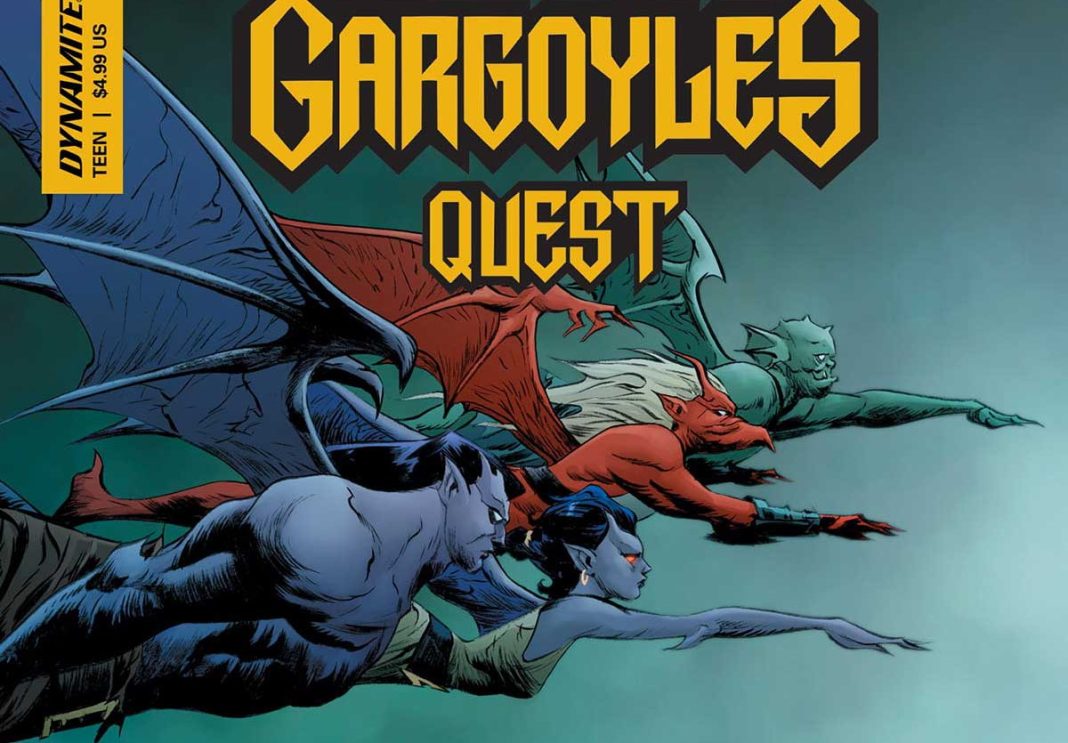
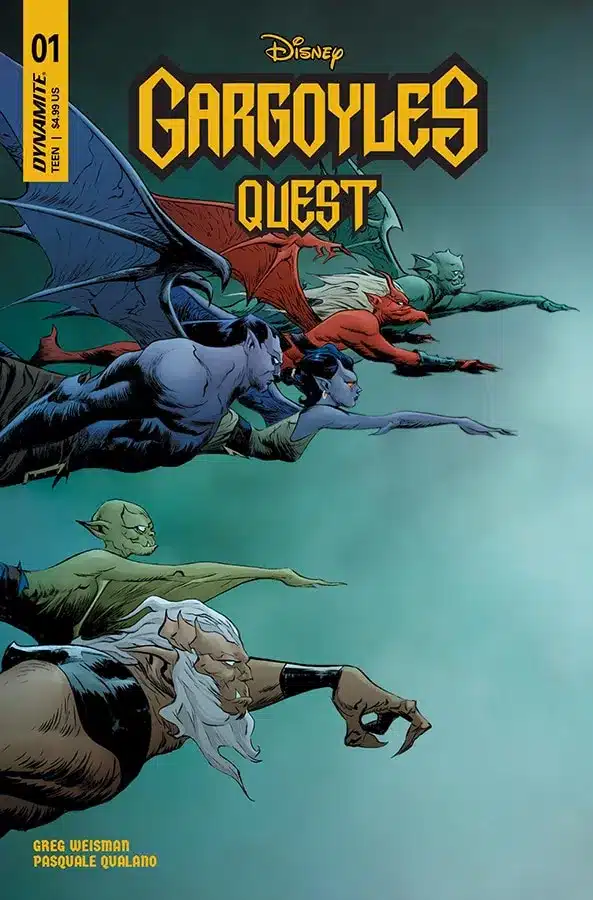
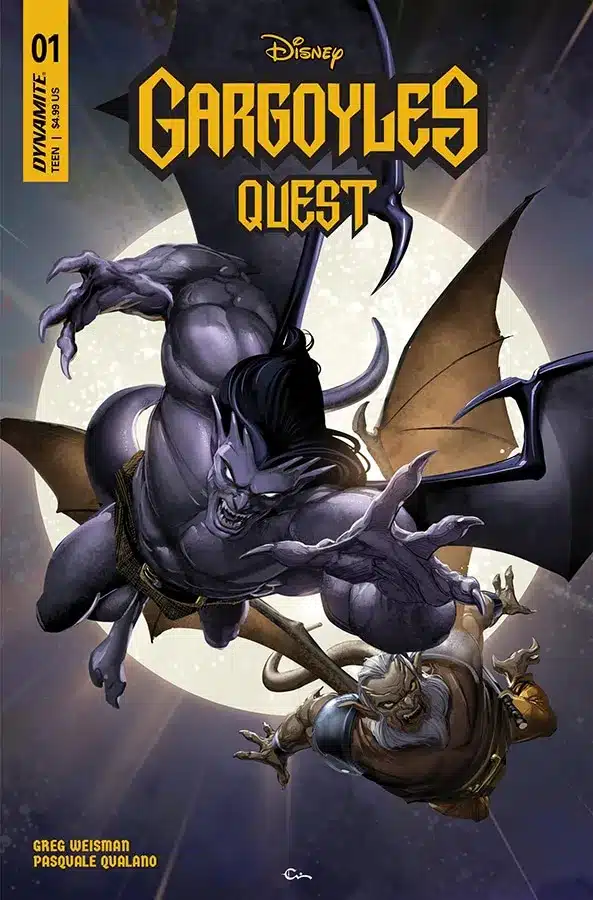
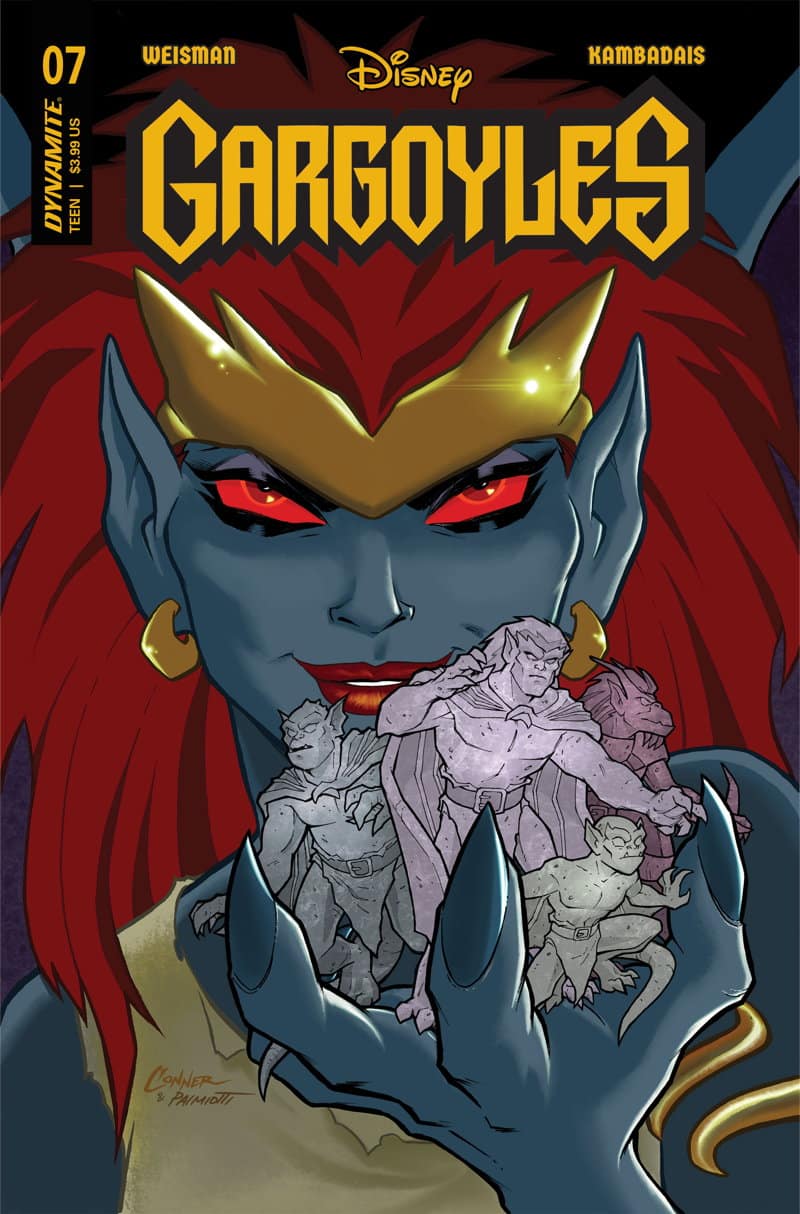
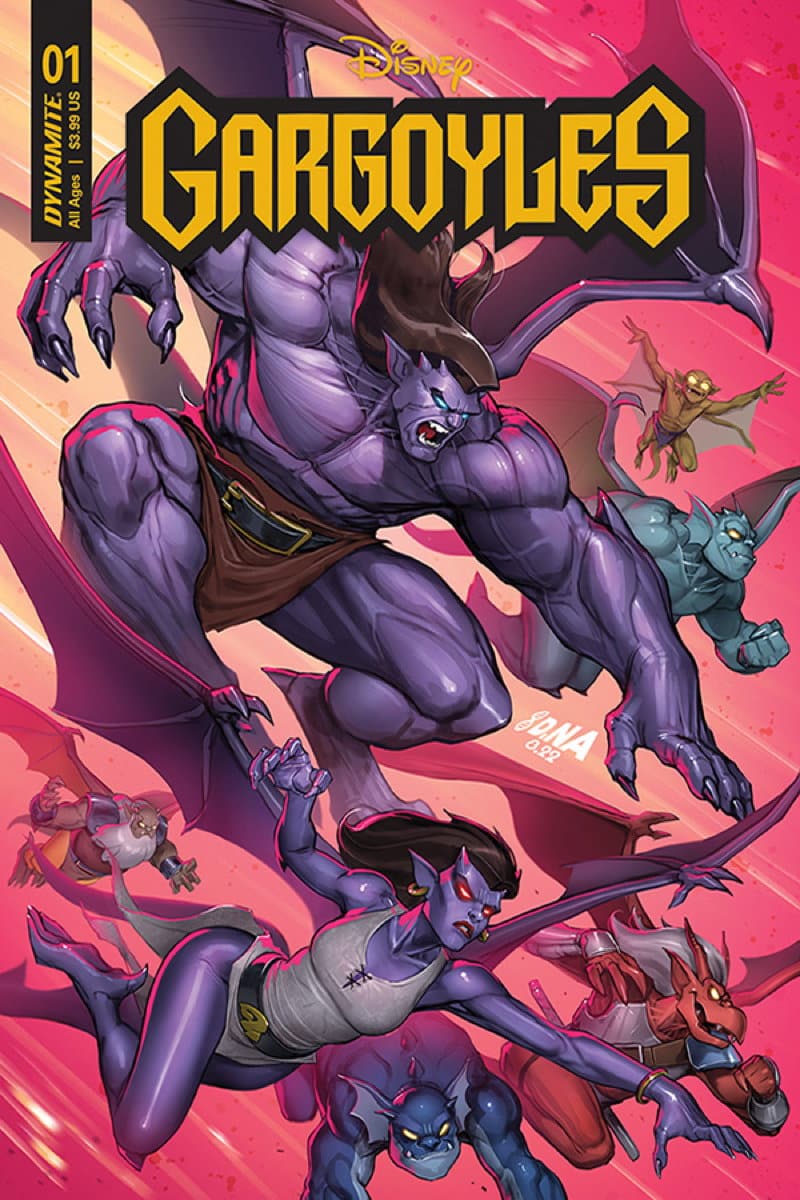

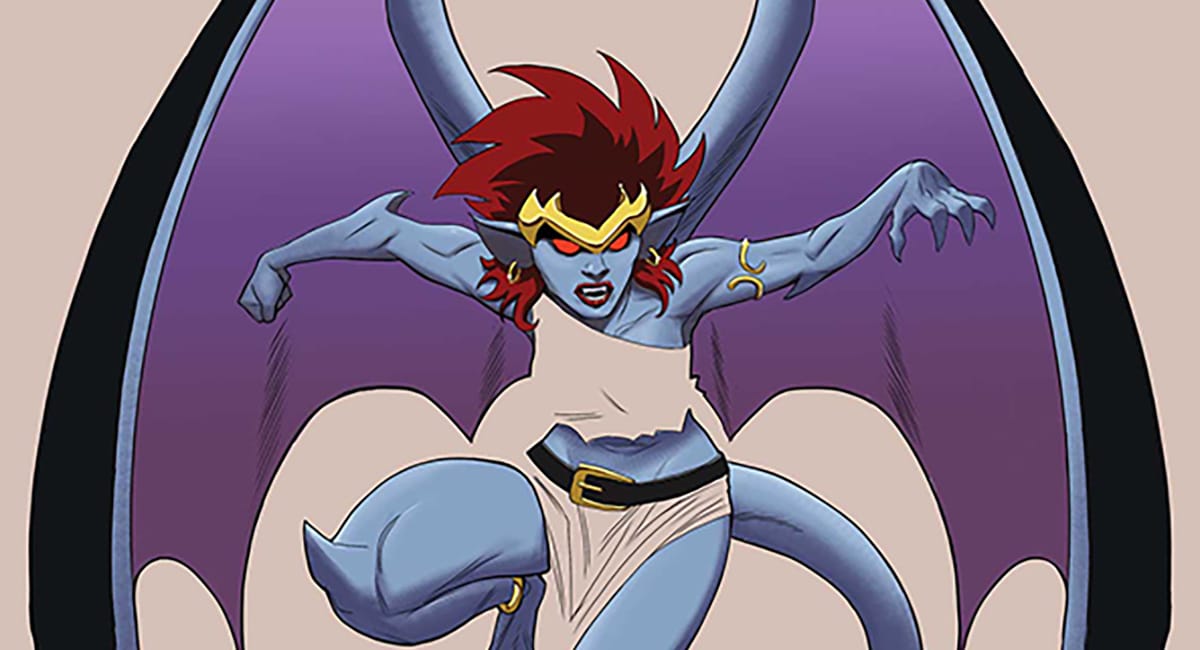




Great interview, article, and I can’t wait for this comic.
But a couple of nits. The third producer was Dennis Woodyard, not Woodruff. Likewise, you’re linking to the wrong wiki. gargwiki.net is the superior wiki, it’s been endorsed and edited by Greg Weisman and the one on wikia regularly lifts information from them without permission.
Thank you!
Comments are closed.